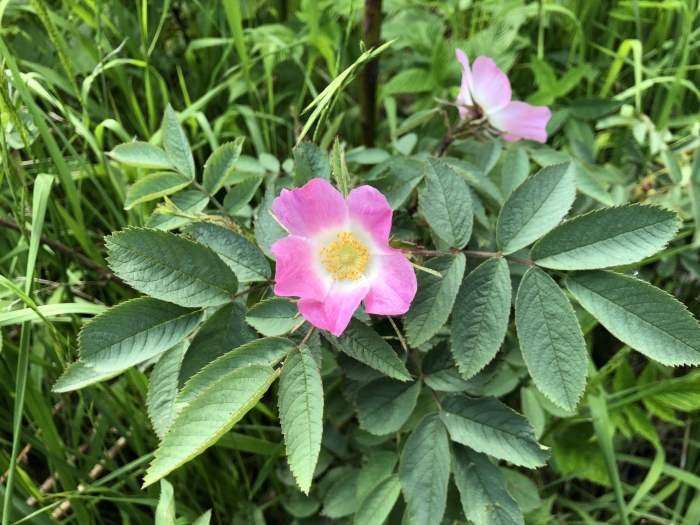Apple Rose
(Rosa villosa)
Apple Rose (Rosa villosa)
/
/

© Jason Grant
CC BY 4.0
Image By:
© Jason Grant
Recorded By:
Copyright:
CC BY 4.0
Copyright Notice:
Photo by: © Jason Grant | License Type: CC BY 4.0 | License URL: http://creativecommons.org/licenses/by/4.0/ | Uploader: jasonrgrant | Publisher: iNaturalist |

























Estimated Native Range
Summary
Rosa villosa, commonly known as Apple Rose, is a deciduous shrub native to a variety of habitats including open woodlands, forest edges, and scrublands across central, southern, and southeastern Europe, extending to southwestern Russia. It typically grows up to 7 feet tall and is characterized by its shiny, medium-green elliptical leaves. The Apple Rose produces white flowers that bloom in early to mid-summer, each flower reaching up to 1 inch in width with five petals, often adorned with yellowish speckles. The flowers are moderately showy, attracting pollinators to the garden. Following the flowering season, the plant bears red hips that resemble small apples, hence the common name, and are noted for their high vitamin C content.
The Apple Rose is valued for its ornamental qualities, including its attractive foliage and fruit. It is often used in mixed borders, wildlife gardens, and as a natural hedge. The rose hips are also harvested for culinary and medicinal purposes, such as making rose hip tea or syrup. This species prefers well-drained soils, tolerates a range of soil types, and requires full sun to part shade to thrive. While generally low-maintenance, it can be susceptible to common rose diseases such as black spot and powdery mildew. Pruning is recommended to maintain shape and promote vigorous growth.CC BY-SA 4.0
The Apple Rose is valued for its ornamental qualities, including its attractive foliage and fruit. It is often used in mixed borders, wildlife gardens, and as a natural hedge. The rose hips are also harvested for culinary and medicinal purposes, such as making rose hip tea or syrup. This species prefers well-drained soils, tolerates a range of soil types, and requires full sun to part shade to thrive. While generally low-maintenance, it can be susceptible to common rose diseases such as black spot and powdery mildew. Pruning is recommended to maintain shape and promote vigorous growth.CC BY-SA 4.0
Plant Description
- Plant Type: Shrub
- Height: 4-8 feet
- Width: 5-6 feet
- Growth Rate: Slow, Moderate
- Flower Color: Pink
- Flowering Season: Spring, Summer, Fall
- Leaf Retention: Deciduous
Growth Requirements
- Sun: Full Sun
- Water: Medium
- Drainage: Medium, Slow
Common Uses
Bird Garden, Border Plant, Butterfly Garden, Low Maintenance, Showy Flowers
Natural Habitat
Native to open woodlands, forest edges, and scrublands across central, southern, and southeastern Europe, including southwestern Russia
Other Names
Common Names: Hairy Rose
Scientific Names: , Rosa villosa, Rubus tomentosus var. villosus,
GBIF Accepted Name: